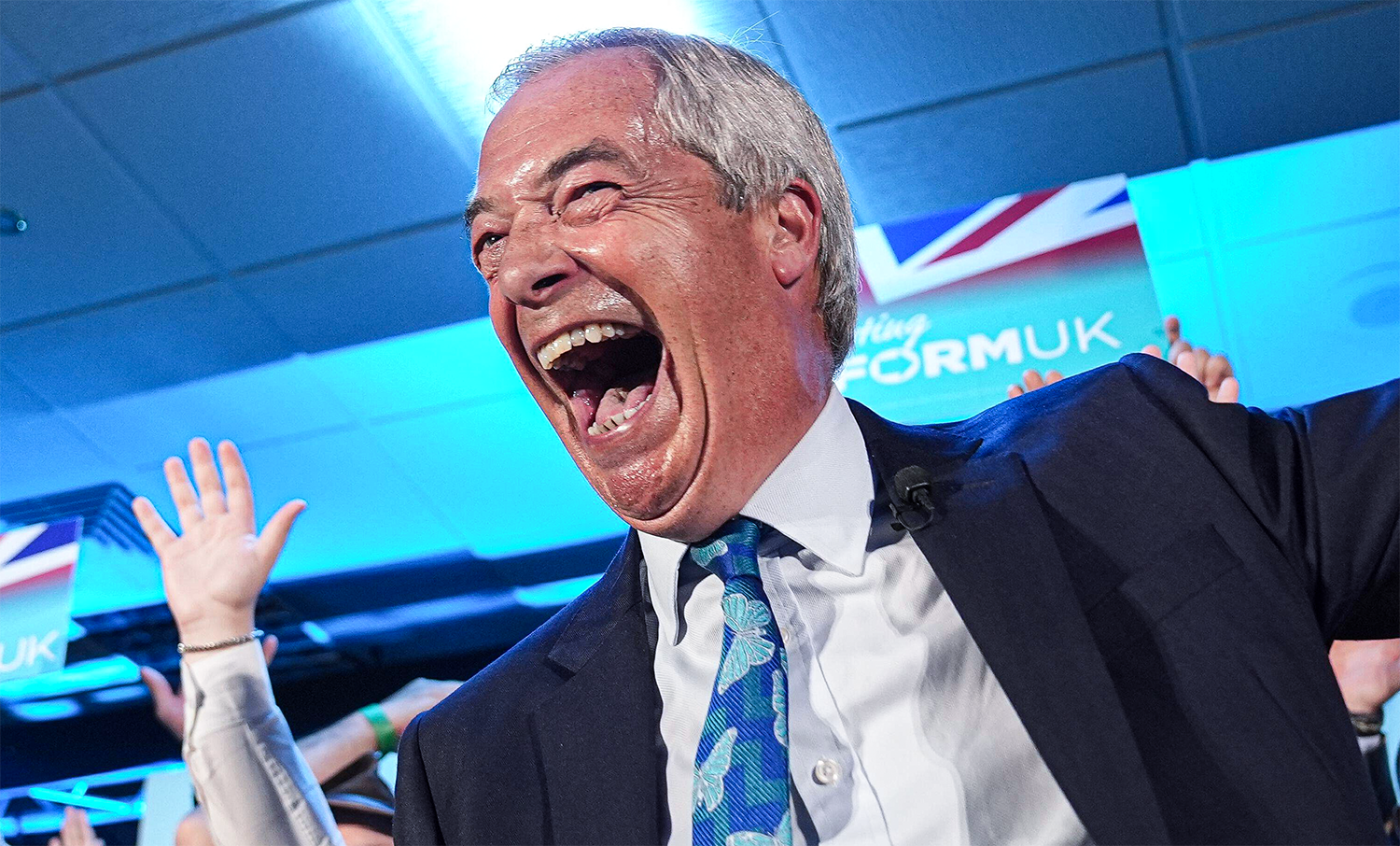Brexit Campaigns Through a Marketing Lens
Leave vs. Remain Strategy Post‑Mortem
The 2016 Brexit referendum marked one of the most significant political campaigns in modern British history. It was not only a political decision but also a fierce marketing battle. Both the Leave and Remain campaigns employed distinct strategies to win over the public, using slogans, emotional appeals, and digital tactics to shape opinion.
In this article, we examine how each side approached their campaign, the tools and techniques they used, and what the results teach us about marketing at scale.
The Marketing Made Clear Podcast
Check out the Marketing Made Clear Podcast on all good streaming platforms including Spotify:
Campaign Brands and Slogans: Take Back Control vs. Stronger In
Every great marketing campaign has a slogan that captures its value proposition. In the Brexit referendum, both sides distilled complex arguments into punchy taglines:
-
Leave (Vote Leave campaign) – Take Back Control. Coined and popularised by the Vote Leave team, notably Dominic Cummings, this phrase promised restored sovereignty. It implied that by leaving the EU, Britons could regain control over laws, borders, and money. The genius of the slogan lay in its simplicity and personal appeal – who wouldn’t want more control over their future?
-
Remain (Britain Stronger in Europe campaign) – Britain Stronger IN Europe. The official Remain campaign, crafted with the help of ad agency M&C Saatchi, chose a positioning statement that focused on strength through unity. It encouraged voters to identify with being “IN” Europe, projecting a sense of reliability and collective strength.
Leave framed Brexit as a gain – regaining control – while Remain framed it as avoiding loss – losing strength and stability. This distinction in message framing would prove pivotal.
Emotional Appeals vs. Rational Arguments
Basic Marketing teaches us that emotional appeals often triumph over dry facts. The Brexit campaigns proved this point emphatically:
-
Remain’s Rational Case: The Remain campaign leaned heavily on rational arguments: economic forecasts, expert warnings, and factual projections. Their messaging resembled a features-and-benefits approach, with endorsements from major institutions like the Bank of England and IMF. It was a logical value proposition: staying in the EU was safer and smarter.
-
Leave’s Emotional Pitch: In contrast, Leave’s campaign was all about feelings. “Take Back Control” played to a sense of national pride, autonomy, and nostalgia. Its emotional appeal was flexible enough to resonate differently with each voter. This type of marketing – creating a psychological mirror – made Leave’s slogan feel empowering and personal.
In hindsight, Remain’s logic-driven approach lacked emotional resonance. Leave’s emotionally charged messaging, by contrast, activated identity, hope, and even fear. When emotion and reason went head to head, emotion won.

Visual Identity and Campaign Imagery
Visual branding played a vital role:
-
Vote Leave: Dominated by the now-infamous red bus claiming “We send the EU £350 million a week, let’s fund our NHS instead.” This high-impact, mobile billboard became the campaign’s visual centrepiece. Despite being widely debunked, the message stuck. The use of red and bold typography conveyed urgency and national pride.
-
Remain: Used calmer blue-and-white tones. The “I’M IN” branding and the emphasis on stability and strength were professional and clean but lacked the boldness and simplicity of Leave’s visuals.
Other notable visuals included the controversial “Breaking Point” poster by Farage’s Leave. EU, and Remain’s people-focused images featuring young, diverse Britons. Vote Leave’s bolder visuals, while often ethically questionable, captured public attention more effectively.
Social Media and Messaging Tactics
2016 was a landmark year for social media in political campaigning:
-
Leave: Embraced micro-targeted Facebook ads and meme-driven virality. Leave.EU, backed by Arron Banks, reportedly made use of data-driven tactics akin to guerrilla marketing. The messaging was tailored, emotive, and incredibly shareable.
-
Remain: Their social media campaigns often felt half-hearted. The #Votein campaign targeting youth was clever on paper but received criticism for being patronising. Their digital content generally lacked the shareability and emotional punch of Leave’s outputs.
Influencer marketing played a role too.
Remain deployed establishment endorsements (e.g. Obama, the IMF, major UK politicians), while Leave embraced anti-establishment figures like Boris Johnson and Nigel Farage. The latter often proved more persuasive to a public that distrusted institutions.
Controversies, Misinformation, and Marketing Ethics
No marketing case study is complete without discussing ethical boundaries:
-
The £350 Million NHS Claim: Widely discredited and condemned by the UK Statistics Authority, yet it proved one of the most powerful messages in the entire campaign.
-
“Project Fear” Label: Leave cleverly rebranded Remain’s expert-led warnings as scare tactics. This eroded the impact of valid concerns by framing them as manipulative.
-
Legal Breaches: Vote Leave was found to have breached spending laws by coordinating with BeLeave. Leave.EU also faced fines for undeclared spending and data breaches.
In terms of public trust, these controversies left a bitter aftertaste. The campaign won, but it did so by stretching ethical and legal boundaries.
Voter Psychology: The Consumer Mindset
Understanding why people voted Leave is key to this analysis:
-
Protest Voting: Many used the referendum to express dissatisfaction with the political establishment. This was a vote against a perceived out-of-touch elite.
-
Alienation and Identity: “Take Back Control” appealed strongly to voters in deindustrialised areas who felt ignored by Westminster.
-
Immigration Fears: Concerns about immigration, real or perceived, played into Leave’s messaging and voter psychology.
-
Economic Discontent: For those already struggling, Remain’s warnings about economic risk held little weight. The status quo wasn’t working for them.
-
Simplicity and Cognitive Ease: Leave’s slogans were digestible and memorable. Remain’s were fact-based but often too complex to stick.

Nigel Farage: Personal Branding in Action
Though not officially part of the Vote Leave campaign, Nigel Farage became Brexit’s most recognisable face. His tactics included:
-
Authenticity: Pints, pubs, and plain-speaking language made him appear relatable.
-
Clear Positioning: He stuck to three messages – leave the EU, control immigration, and reject the elite.
-
Media Savvy: From the Thames flotilla to daily TV appearances, Farage knew how to dominate the news cycle.
-
Post-Referendum Strategy: By stepping back after the vote, he distanced himself from the political chaos. He then returned with the Brexit Party in 2019, further cementing his role as the Brexit brand ambassador.
Farage’s ability to align himself with a political movement and personify its ethos is a case study in effective personal brand building.
Has Brexit Delivered on Its Marketing Promises?
In a word: no. Let’s assess the main campaign promises against reality:
-
Sovereignty: Technically regained, but complicated by the realities of international trade and internal divisions (e.g. Northern Ireland).
-
NHS Funding: The promised £350m per week never materialised.
-
Economic Gains: Most economists agree Brexit has shrunk the UK economy by 2-4% of GDP compared to remaining in the EU.
-
Trade Deals: New agreements have had minimal impact compared to the friction caused by leaving the EU’s single market.
-
Immigration: While EU immigration fell, overall immigration rose to record highs post-Brexit.
-
Red Tape: Far from being reduced, bureaucracy has increased, especially for businesses exporting to the EU.
Public opinion has shifted significantly. A 2023 survey found that 65% of the UK public believe Brexit has gone badly.
Marketing Lessons from the Brexit Campaigns
-
Emotion Beats Reason: Emotional storytelling wins hearts. Pair it with truth for long-term success.
-
Simplicity Matters: Distil complex propositions into memorable slogans.
-
Meet People Where They Are: Understand and address your audience’s lived experience.
-
Be Bold and Creative: Daring visuals and PR stunts can dominate attention.
-
Think Long-Term: Overpromising leads to disillusionment. Build trust by delivering on expectations.
-
Use the Right Influencers: Match endorsements to audience values. Establishment figures won’t always sway the masses.
-
Segment and Personalise: Tailor messages to different demographics while keeping the core message consistent.
Final Thoughts
The Brexit referendum was more than a political decision – it was a masterclass in marketing. Leave ran an emotionally driven, highly targeted campaign that resonated with disaffected voters. Remain presented a rational case, but failed to connect emotionally.
The result? A narrow win for Leave, followed by years of political and economic turbulence. Whether you see it as a tragic error or a historic course correction, one thing is clear: marketing played a pivotal role in shaping the outcome.
For marketers, the Brexit campaigns offer both inspiration and caution. Emotion, clarity, and connection win the day – but only when the product behind the promise delivers.
TL;DR
-
Leave used emotionally charged, simple messaging (“Take Back Control”) and bold visuals like the red bus.
-
Remain relied on expert endorsements and rational arguments (“Stronger In”).
-
Leave’s strategy proved more effective despite ethical controversies.
-
Brexit’s key promises have largely gone unfulfilled, with growing public discontent.
-
Marketers can learn much from Brexit: simplicity, emotional resonance, and strategic audience targeting are essential – but long-term trust matters most.


